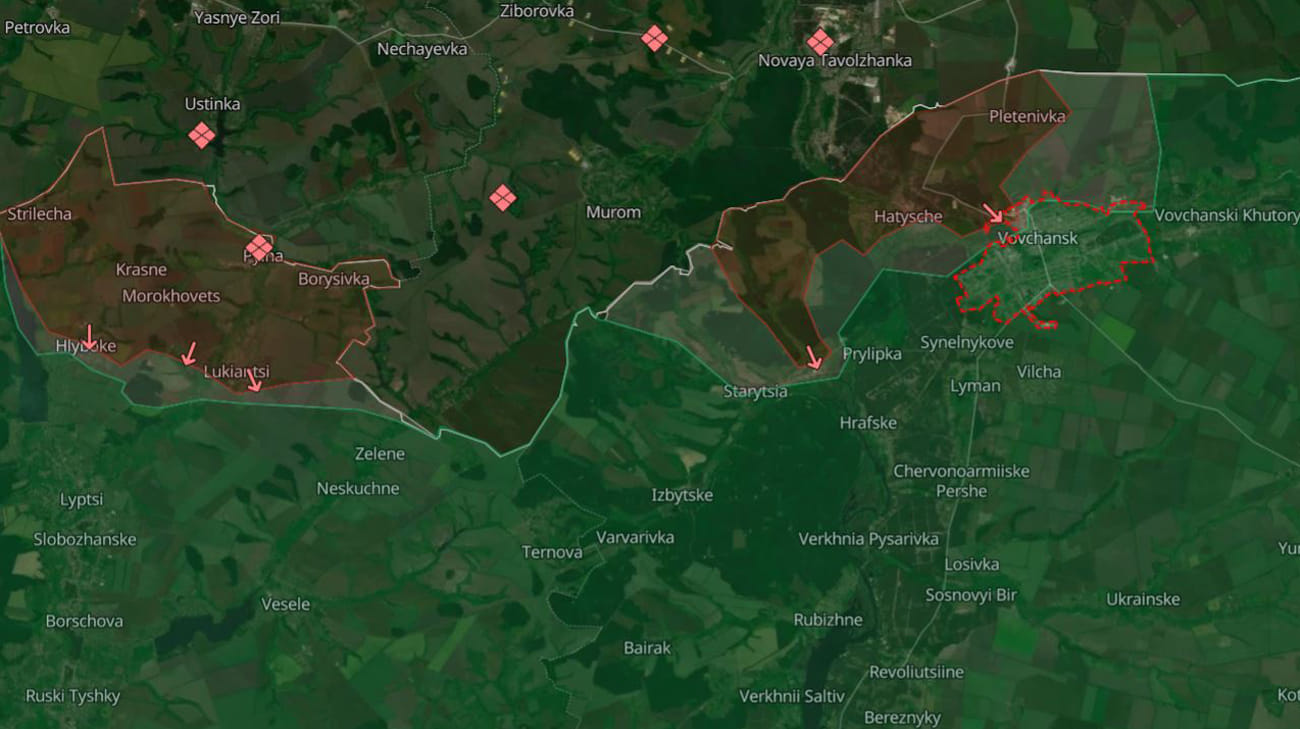As fighting empties north Gaza, humanitarian crisis worsens in south
DEIR AL-BALAH, Gaza Strip (AP) — Another 200,000 people have fled northern Gaza since Nov. 5, the U.N. humanitarian office said Tuesday, as Israeli ground forces battle Palestinian militants around hospitals where patients, newborns and medics are stranded with no electricity and dwindling supplies.The humanitarian office, known as OCHA, says only one hospital in the north is capable of receiving patients. All the others are no longer able to function and mostly serve as shelters from the fighting, including Gaza’s largest, Shifa, which is surrounded by Israeli troops and where 36 babies are at risk of dying because there is no power for incubators.The war, now in its sixth week, was triggered by Hamas’ surprise attack into Israel, in which militants massacred hundreds of civilians and dragged some 240 hostages back to Gaza. Israel launched heavy airstrikes for nearly three weeks before sending troops and tanks into the north. The war has killed thousands of Palestinian civilians and wreaked widespread destruction on the impoverished enclave. Israel has urged civilians to evacuate Gaza City and surrounding areas in the north, but the southern part of the besieged territory is not much safer. Israel carries out frequent airstrikes from north to south, hitting what it says are militant targets but often killing women and children. U.N.-run shelters in the south are severely overcrowded, with an average of one toilet for 160 people. In all, some 1.5 million Palestinians, more than two thirds of Gaza’s population, have fled their homes. People stand in line for hours for scarce bread and brackish water. Trash is piling up, sewage is flooding the streets and taps run dry because there is no fuel for water pumps or treatment plants. Israel has barred fuel imports since the start of the war, saying Hamas would use it for military purposes.The onset of rainy, cold weather added to the misery. At a tent camp outside a hospital in the central town of Deir al-Balah, people trudged through mud as they stretched plastic tarps over flimsy tents. “All of these tents collapsed because of the rain,” said Iqbal Abu Saud, who had fled Gaza City with 30 of her relatives. “How many days will we have to deal with this?”The U.N. agency for Palestinian refugees, which is struggling to provide basic services to over 600,000 people sheltering in schools and other facilities in the south, said it may run out of fuel by Wednesday, forcing it to halt most aid operations. It said it was unable to continue importing limited supplies of food and medicine through Egypt’s Rafah crossing, Gaza’s only link to the outside world.With Israeli forces fighting Palestinian militants in the center of Gaza City, both sides have seized on the plight of hospitals. Images of doctors trying to keep newborns warm at Shifa have circulated widely. Israel accuses Hamas of using hospitals as cover for its fighters, alleging that Hamas has set up its main command center in and beneath Shifa, without providing visual evidence. Both Hamas and Shifa Hospital staff deny the Israeli allegations.On Monday, the military released footage of a children’s hospital that its forces entered over the weekend, showing weapons it said it found inside, as well as rooms in the basement where it believes the militants were holding hostages. The video showed what appeared to be a hastily installed toilet and ventilation system, as well as a motorcycle with a bullet hole in it, in the basement. The Health Ministry in Hamas-ruled Gaza rejected the allegations, saying the basement shown was part of the hospital and had been turned into a shelter for displaced people.“The hospital was forcefully evacuated at gunpoint ... Why didn’t they detain any of the alleged resistance or alleged hostages?” the statement said. It denied the facility was related to a tunnel that Israeli forces uncovered nearby.For weeks, Shifa staff members running low on supplies have performed surgery on war-wounded patients, including children, without anesthesia and using vinegar as antiseptic. After the weekend’s mass exodus, about 650 patients and 500 staff remain in the hospital, which can no longer function, along with around 2,500 displaced Palestinians sheltering inside with little food or water.The Health Ministry said 32 patients, including three babies, have died since its emergency generator ran out of fuel Saturday. It said the 36 babies, as well as other patients, are at risk of dying.Early Tuesday, the Israeli military said in a statement that it had started an effort to transfer incubators from Israel to Shifa. It wasn’t clear if the incubators had been delivered or how they will be powered. International law gives hospitals special protections during war. Hospitals can lose those protections if combatants use them to hide fighters or store weapons, but staff and patients must be given plenty of warning to evacuate, and the harm to
DEIR AL-BALAH, Gaza Strip (AP) — Another 200,000 people have fled northern Gaza since Nov. 5, the U.N. humanitarian office said Tuesday, as Israeli ground forces battle Palestinian militants around hospitals where patients, newborns and medics are stranded with no electricity and dwindling supplies.
The humanitarian office, known as OCHA, says only one hospital in the north is capable of receiving patients. All the others are no longer able to function and mostly serve as shelters from the fighting, including Gaza’s largest, Shifa, which is surrounded by Israeli troops and where 36 babies are at risk of dying because there is no power for incubators.
The war, now in its sixth week, was triggered by Hamas’ surprise attack into Israel, in which militants massacred hundreds of civilians and dragged some 240 hostages back to Gaza. Israel launched heavy airstrikes for nearly three weeks before sending troops and tanks into the north. The war has killed thousands of Palestinian civilians and wreaked widespread destruction on the impoverished enclave.
Israel has urged civilians to evacuate Gaza City and surrounding areas in the north, but the southern part of the besieged territory is not much safer. Israel carries out frequent airstrikes from north to south, hitting what it says are militant targets but often killing women and children.
U.N.-run shelters in the south are severely overcrowded, with an average of one toilet for 160 people. In all, some 1.5 million Palestinians, more than two thirds of Gaza’s population, have fled their homes.
People stand in line for hours for scarce bread and brackish water. Trash is piling up, sewage is flooding the streets and taps run dry because there is no fuel for water pumps or treatment plants. Israel has barred fuel imports since the start of the war, saying Hamas would use it for military purposes.
The onset of rainy, cold weather added to the misery. At a tent camp outside a hospital in the central town of Deir al-Balah, people trudged through mud as they stretched plastic tarps over flimsy tents.
“All of these tents collapsed because of the rain,” said Iqbal Abu Saud, who had fled Gaza City with 30 of her relatives. “How many days will we have to deal with this?”
The U.N. agency for Palestinian refugees, which is struggling to provide basic services to over 600,000 people sheltering in schools and other facilities in the south, said it may run out of fuel by Wednesday, forcing it to halt most aid operations. It said it was unable to continue importing limited supplies of food and medicine through Egypt’s Rafah crossing, Gaza’s only link to the outside world.
With Israeli forces fighting Palestinian militants in the center of Gaza City, both sides have seized on the plight of hospitals. Images of doctors trying to keep newborns warm at Shifa have circulated widely.
Israel accuses Hamas of using hospitals as cover for its fighters, alleging that Hamas has set up its main command center in and beneath Shifa, without providing visual evidence. Both Hamas and Shifa Hospital staff deny the Israeli allegations.
On Monday, the military released footage of a children’s hospital that its forces entered over the weekend, showing weapons it said it found inside, as well as rooms in the basement where it believes the militants were holding hostages. The video showed what appeared to be a hastily installed toilet and ventilation system, as well as a motorcycle with a bullet hole in it, in the basement.
The Health Ministry in Hamas-ruled Gaza rejected the allegations, saying the basement shown was part of the hospital and had been turned into a shelter for displaced people.
“The hospital was forcefully evacuated at gunpoint ... Why didn’t they detain any of the alleged resistance or alleged hostages?” the statement said. It denied the facility was related to a tunnel that Israeli forces uncovered nearby.
For weeks, Shifa staff members running low on supplies have performed surgery on war-wounded patients, including children, without anesthesia and using vinegar as antiseptic. After the weekend’s mass exodus, about 650 patients and 500 staff remain in the hospital, which can no longer function, along with around 2,500 displaced Palestinians sheltering inside with little food or water.
The Health Ministry said 32 patients, including three babies, have died since its emergency generator ran out of fuel Saturday. It said the 36 babies, as well as other patients, are at risk of dying.
Early Tuesday, the Israeli military said in a statement that it had started an effort to transfer incubators from Israel to Shifa. It wasn’t clear if the incubators had been delivered or how they will be powered.
International law gives hospitals special protections during war. Hospitals can lose those protections if combatants use them to hide fighters or store weapons, but staff and patients must be given plenty of warning to evacuate, and the harm to civilians cannot be disproportionate to the military objective.
The International Committee of the Red Cross tried Monday to evacuate some 6,000 people from another Gaza City hospital, Al-Quds, but said its convoy had to turn back because of shelling and fighting. Israel released a video showing what it said was a militant with a rocket-propelled grenade launcher entering Al-Quds Hospital. An Israeli tank was stationed nearby.
The U.S. has pushed for temporary pauses to allow wider distribution of badly needed aid. Israel has agreed only to daily windows during which civilians can flee northern Gaza on foot along two main roads.
As of last Friday, more than 11,000 Palestinians, two-thirds of them women and minors, have been killed since the war began, according to the Health Ministry in Gaza, which does not differentiate between civilian and militant deaths. About 2,700 people have been reported missing.
Health officials have not updated the toll, citing the difficulty of collecting information.
At least 1,200 people have died on the Israeli side, mostly civilians killed in the initial Hamas attack. Palestinian militants. The military says 46 soldiers have been killed in ground operations in Gaza, and that thousands of militants have been killed.
About 250,000 Israelis have evacuated from communities near Gaza, where Palestinian militants still fire barrages of rockets, and along the northern border, where Israel and Lebanon’s Hezbollah militant group have repeatedly traded fire since the start of the war.
The war has also fueled tensions in the Israeli-occupied West Bank. At least seven Palestinian were killed overnight during an Israeli raid in Tulkarem, the Palestinian Health Ministry said Tuesday. There was no immediate comment from the army. More than 190 Palestinians have been killed in the West Bank since Oct. 7, mainly during violent protests and gunfights sparked by arrest raids.
___
Magdy reported from Cairo. Associated Press writer Amy Teibel in Jerusalem contributed to this report.
___
Full AP coverage at https://apnews.com/hub/israel-hamas-war.



